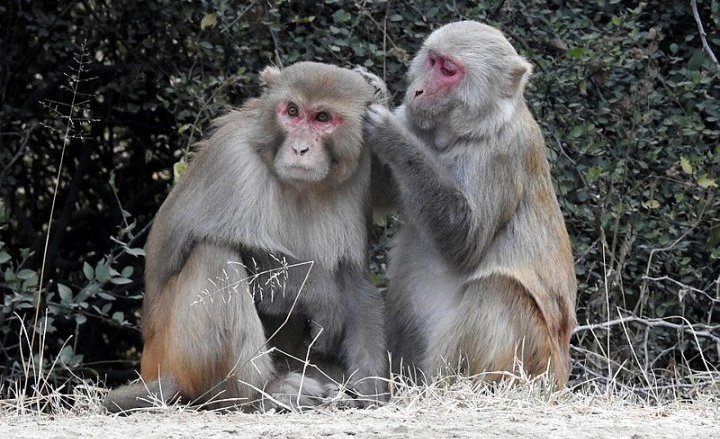
The title is a quote by the famous American athlete Gene Mauch, and illustrates the recurrent nature of malaria. In a recently published study, a research group led by Praveen Karanth from the Indian Institute of Science (IISc), Bengaluru, investigated the distribution of the malarial parasite in non-human primates in India.
The latest World Malaria Report by WHO estimated a towering 219 million cases of malaria worldwide in 2017, where 1.31 million hailed from India alone. The malaria parasite, Plasmodium, is an example of a human disease-causing pathogen which originated in non-human primates (e.g. monkeys, lemurs and apes). Humans share up to 99% genetic similarity with some of these species, and accumulating scientific evidence suggests that parasite transmission between humans and primates is possible. This makes it imperative to understand the origin, evolution and diversity of this pathogen in these primates.
In India, Rhesus macaque and Bonnet macaque are two commonly found species of monkeys. While in some parts of the country they are considered sacred and worshipped, in others they are considered pests as they raid crops. In both cases, there is enough interaction of these monkeys with humans to enable a transmission of the disease. So, even if malaria is eradicated from India, these animals may be a source of recurrent infection in the long run.
The current study explores the different types of Plasmodium species found in Indian primates and their connection to Plasmodium species found in humans and other primates. Karanth’s team worked with a total of 444 samples (fecal, blood and tissue) from different parts of the country. Their results confirm the presence of three Plasmodium species in Bonnet Macaques. This study also reports, for the first time, the presence of Plasmodium falciparum, the cause of cerebral malaria in humans, in both Bonnet and Rhesus Macaques.
The data for this current study was mostly collected from South-West India, in the states of Karnataka and Kerala, where simian malaria is prevalent. Some sampling was also done in Tamil Nadu, Andhra Pradesh, Telengana, Bihar, Uttar Pradesh and Delhi. However, the study does not include sampling in central and eastern India, where human malaria is more common. This was perhaps due to the fact that the researchers were trying to primarily understand the distribution of the parasite in monkey populations and how that may affect human malaria.
“The main message of our paper is that we must also monitor malarial parasites in our primate species for a holistic approach to malaria management in India,” says Karanth.
According to Aparup Das, malaria researcher and Director of the Indian Council of Medical Research (ICMR) — National Institute of Research in Tribal Health (NIRTH), Jabalpur, studies from his research group indicate that primates indeed play the role of reservoirs for the malaria pathogen. “The present study could justify this,” he says.
The National Framework for Malaria Elimination (NFME) in India 2016 – 2030 was launched by the National Vector Borne Disease Control Programme (NVBDCP) of the Ministry of Health and Family Welfare in 2016. NFME aims to eliminate malaria in India by 2030, an aim which aligns with WHO’s target of reducing malaria rates by 90% within the same time frame. The present study, by pointing out a potential reservoir for malaria parasite, indicates an area that must be taken into consideration while implementing malaria-eradication strategies.